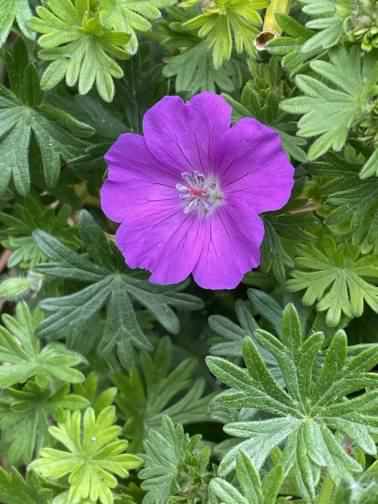
Photos ©2023
Click any photo for a larger image


Photos ©2023
Click any photo for a larger image

Bloody Cranesbill - Geranium sanguineum
Family - Geraniaceae
Also known as - Bloody Geranium
Bloody Cranesbill is a compact herbaceous, thickly rhizomatous perennial growing to a height of 30-45cm (12-18in), forming spreading clumps with deeply lobed palmate leaves that are a rich green in colour, these leaves turn blood-red in the autumn as may be suspected form the species name. It is native to a broad range of habitats throughout Europe and Asia, including meadows, woodland edges, and rocky slopes. It adapts to a variety of soil types and can thrive in both sunlit and partially shaded locations thriving in a variety of settings.
Bright crimson five-petaled hermaphroditic flowers with dark veining, up to 4cm (1.5in) wide are typically a vivid crimson to magenta in colour, although variations can occur. Each flower has a prominent central boss of contrasting stamens of a cranelike structure, which gives the plant its common name, "Cranesbill". It blooms sporadically from May through to October, and is apparently the county flower of Northumberland.
BCP do not advise or recommend that Bloody Cranesbill – Geranium sanguineum is eaten or used as an herbal remedy. This species has also been employed in traditional herbal medicine for its astringent properties, though its use is less common today.
Site design ©1999– Brickfields Country Park - Privacy -